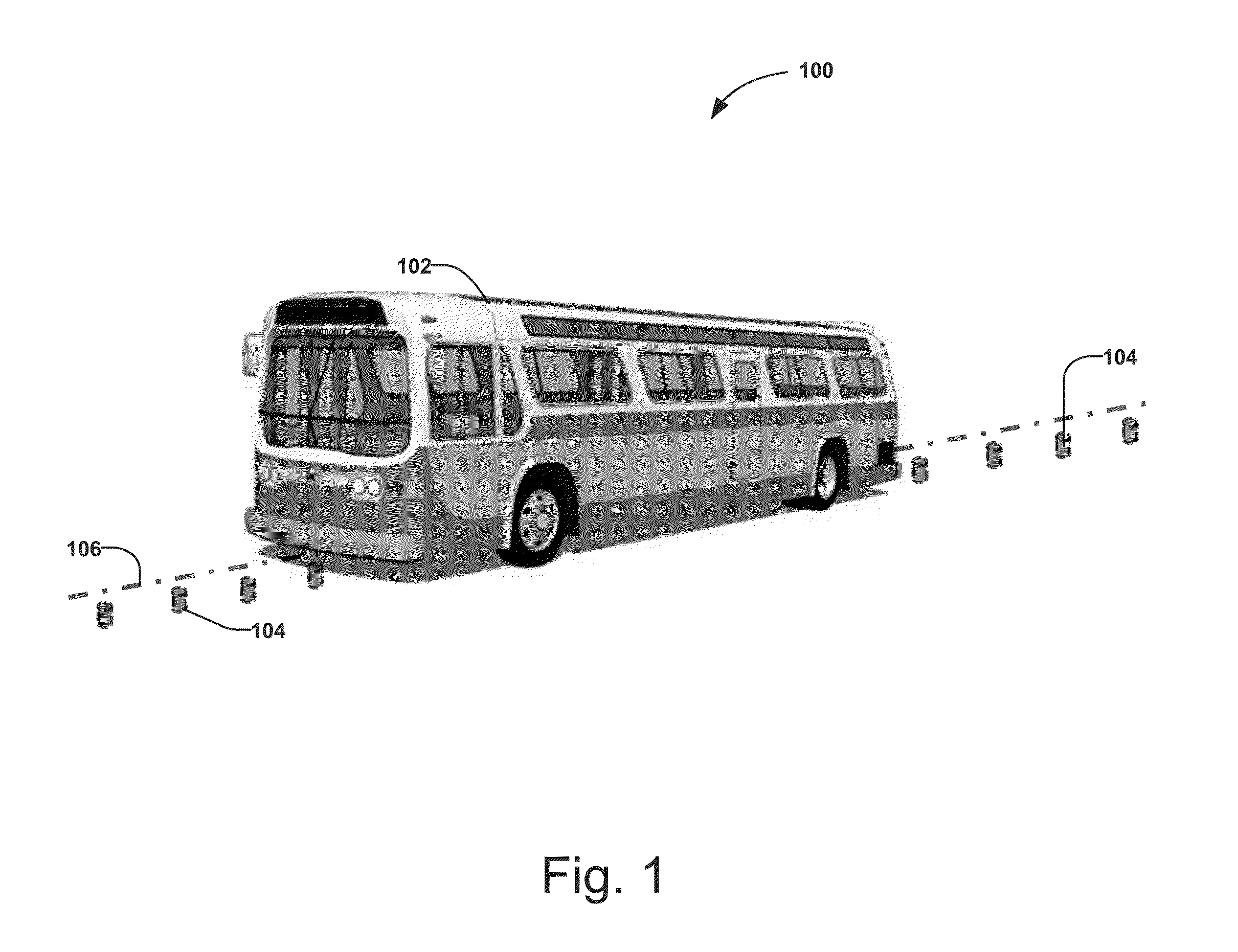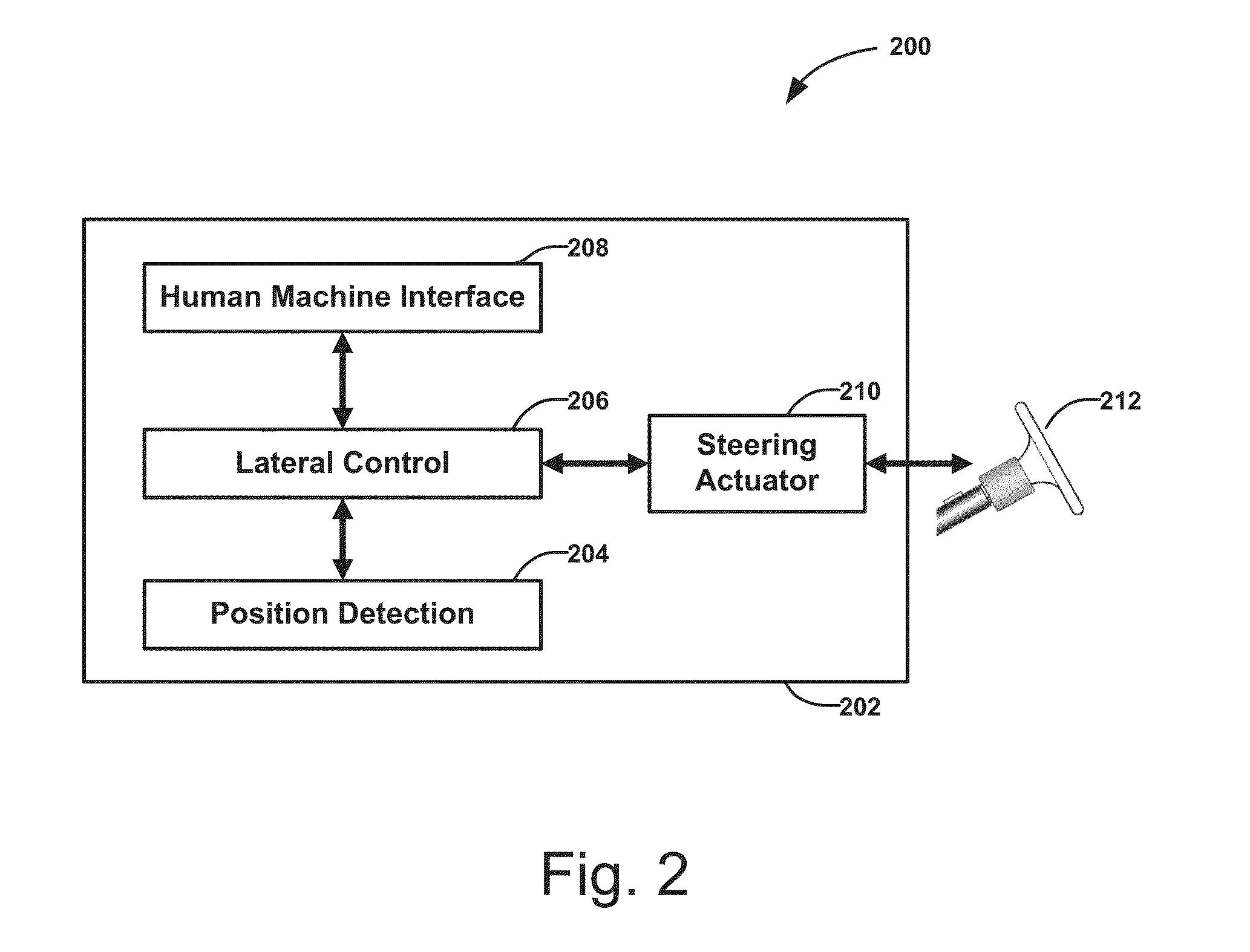Trip planning and management methods for an intelligent transit system with electronic guided buses
a technology of intelligent transit and electronic guided buses, applied in the direction of navigation instruments, external condition input parameters, non-deflectable wheel steering, etc., can solve the problems of reducing the traffic capacity of other vehicles, and the subway system is usually very expensive, so as to maximize the transit's capacity and efficiency, and not increase the workload of drivers.
- Summary
- Abstract
- Description
- Claims
- Application Information
AI Technical Summary
Benefits of technology
Problems solved by technology
Method used
Image
Examples
Embodiment Construction
[0054]FIG. 1 shows an electronic guided bus 102, which is capable of following a magnet track 106 defined by magnetic markers 104 installed in the roadway. The magnetic markers 104 are usually permanent magnets and are typically installed under the road surface with one polarity (either north pole or south pole) facing upward. The magnetic markers 104 may be installed along the lane centerline or with a predefined offset (or predefined offsets) to the lane centerline. The distance between the magnetic markers 104 may be a fixed distance (e.g., 1 m) and may also vary depending on road curvature or other considerations.
[0055]FIG. 2 is a block diagram 200 of an electronic guidance system 202 on-board the electronic guided bus 102. The electronic guidance system 202 is capable of guiding the bus 102 through the magnet track 106 defined by the magnetic markers 104. The position sensing unit 204 determines the lateral deviation of the bus 102 with respect to the magnet track 106, and sinc...
PUM
 Login to View More
Login to View More Abstract
Description
Claims
Application Information
 Login to View More
Login to View More - R&D
- Intellectual Property
- Life Sciences
- Materials
- Tech Scout
- Unparalleled Data Quality
- Higher Quality Content
- 60% Fewer Hallucinations
Browse by: Latest US Patents, China's latest patents, Technical Efficacy Thesaurus, Application Domain, Technology Topic, Popular Technical Reports.
© 2025 PatSnap. All rights reserved.Legal|Privacy policy|Modern Slavery Act Transparency Statement|Sitemap|About US| Contact US: help@patsnap.com



